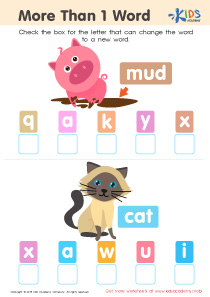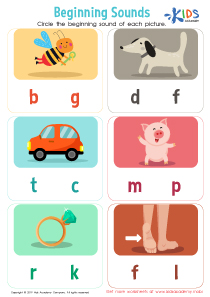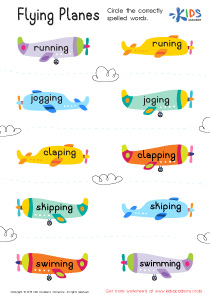Ending Sounds Worksheets for Ages 3-6
6 filtered results
-
From - To
Enhance your child's literacy journey with our "Ending Sounds Worksheets for Ages 3-6.” Specifically designed for early learners, these engaging worksheets help children identify and understand final consonant sounds in words. With vibrant illustrations and interactive activities, young students can practice recognizing ending sounds in a fun and educational way. Perfect for parents and teachers, these resources support foundational phonics skills vital for reading success. Discover a variety of exercises that build confidence and phonemic awareness. Nurture beginner readers with our expertly crafted worksheets, ensuring a strong start in their educational adventure.
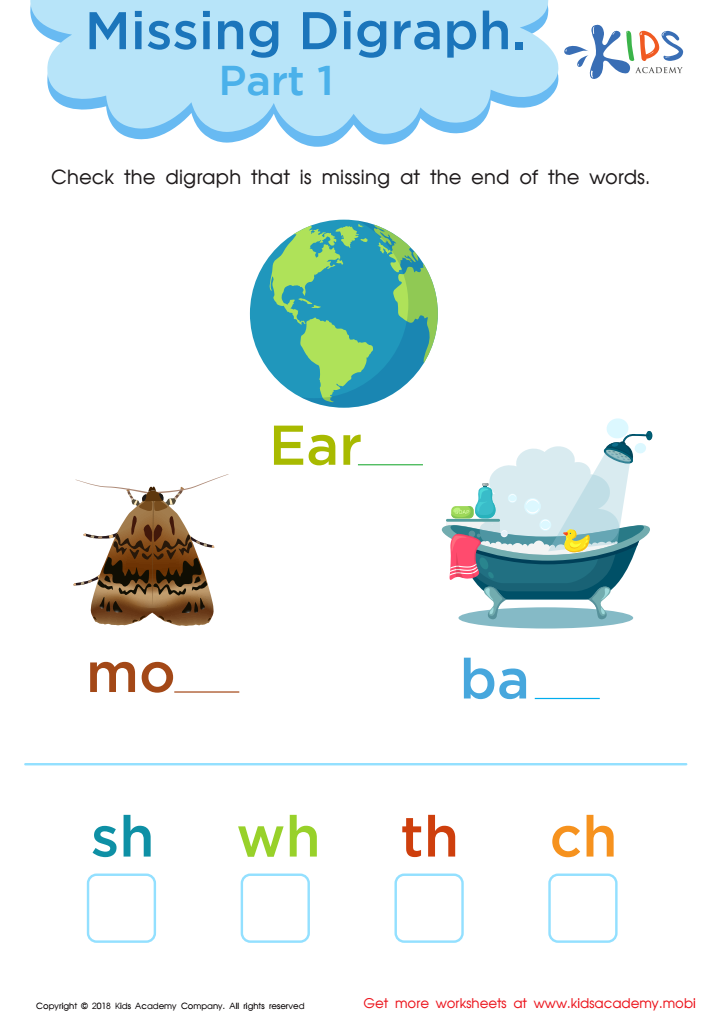

Missing Digraph: Part 1 Worksheet
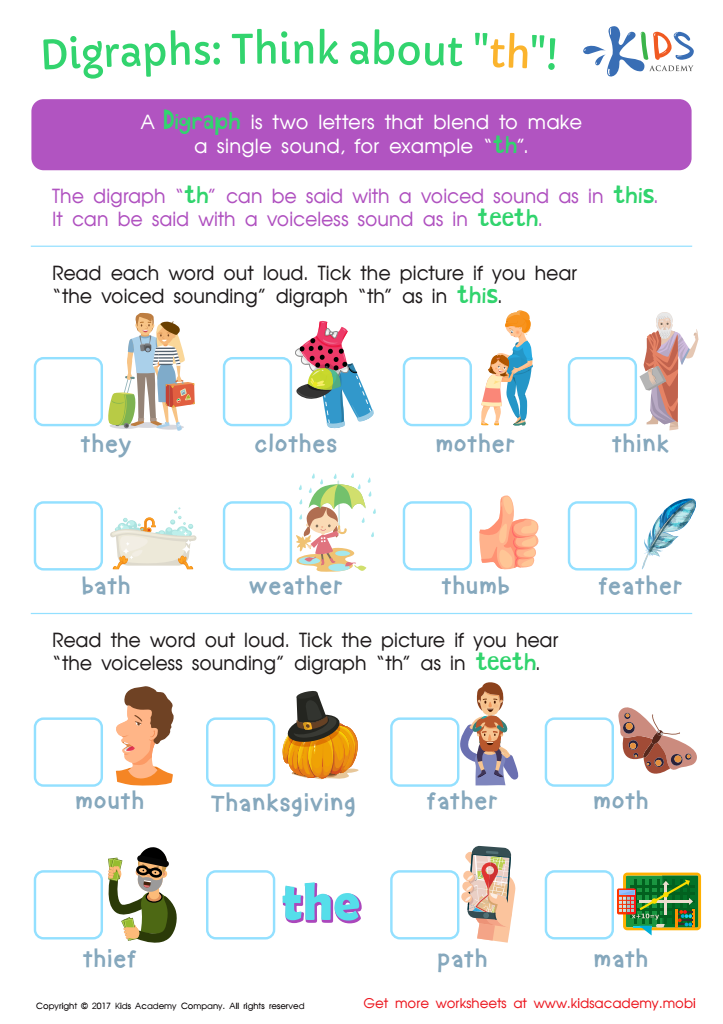

Digraphs: Think About "th" Worksheet
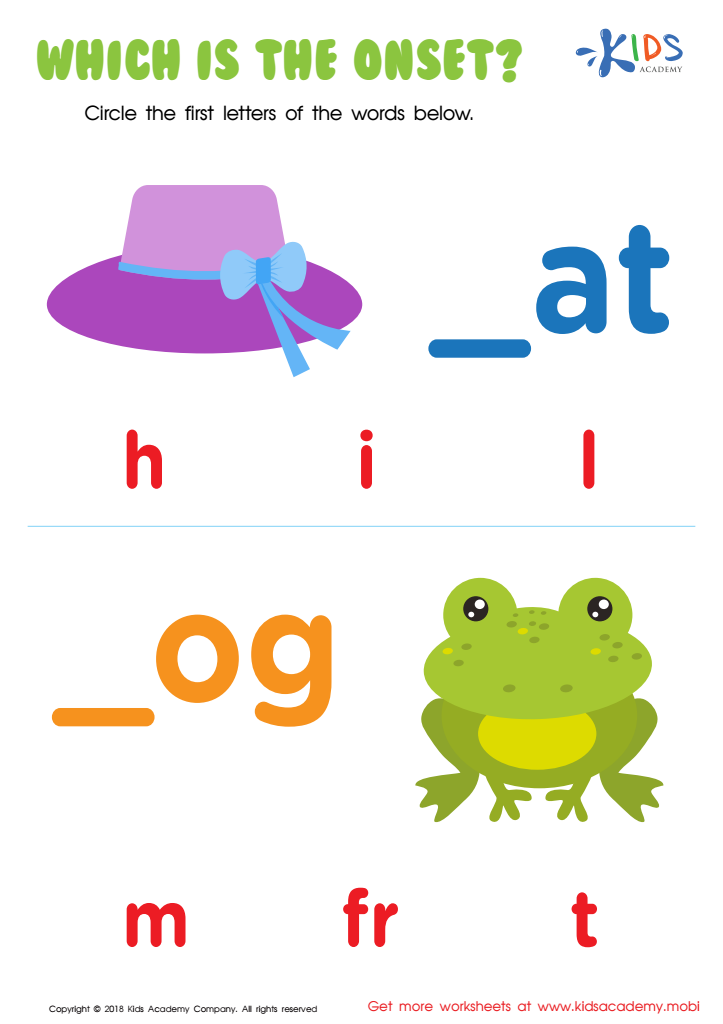

Which Is the Onset? Worksheet
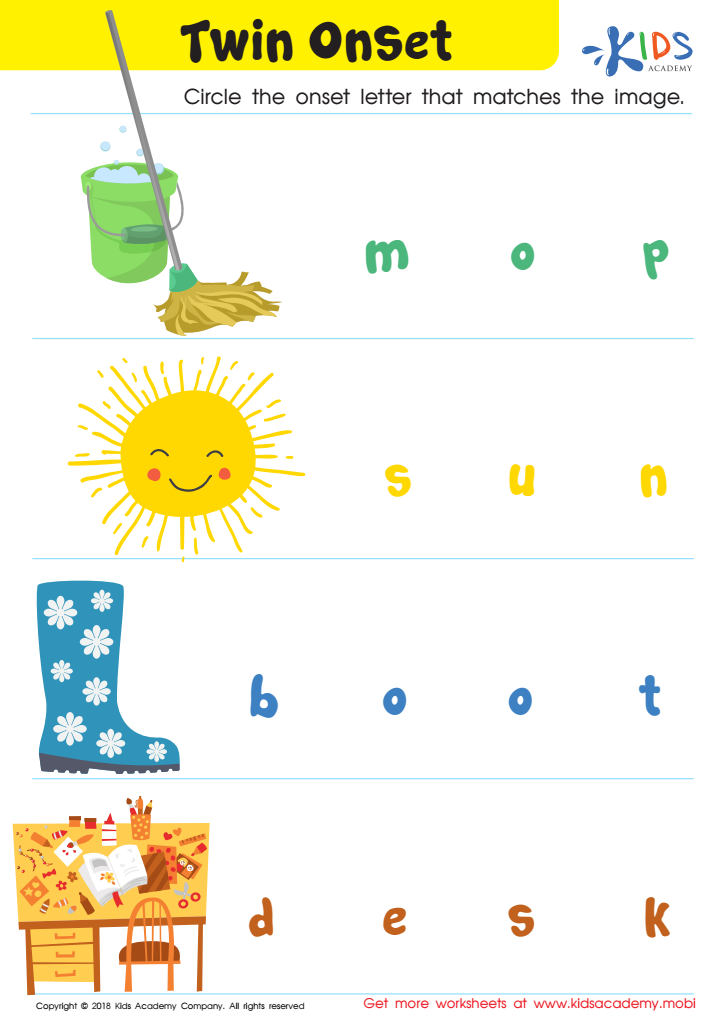

Twin Onset Worksheet
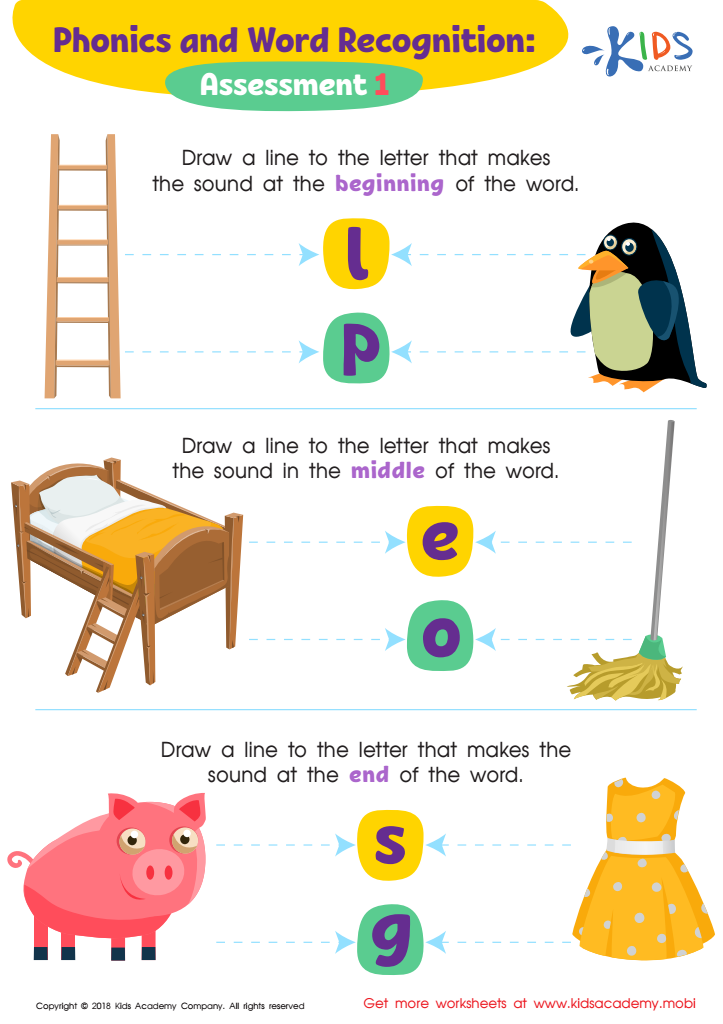

Phonics and Word Recognition: Assessment 1 ELA Worksheet
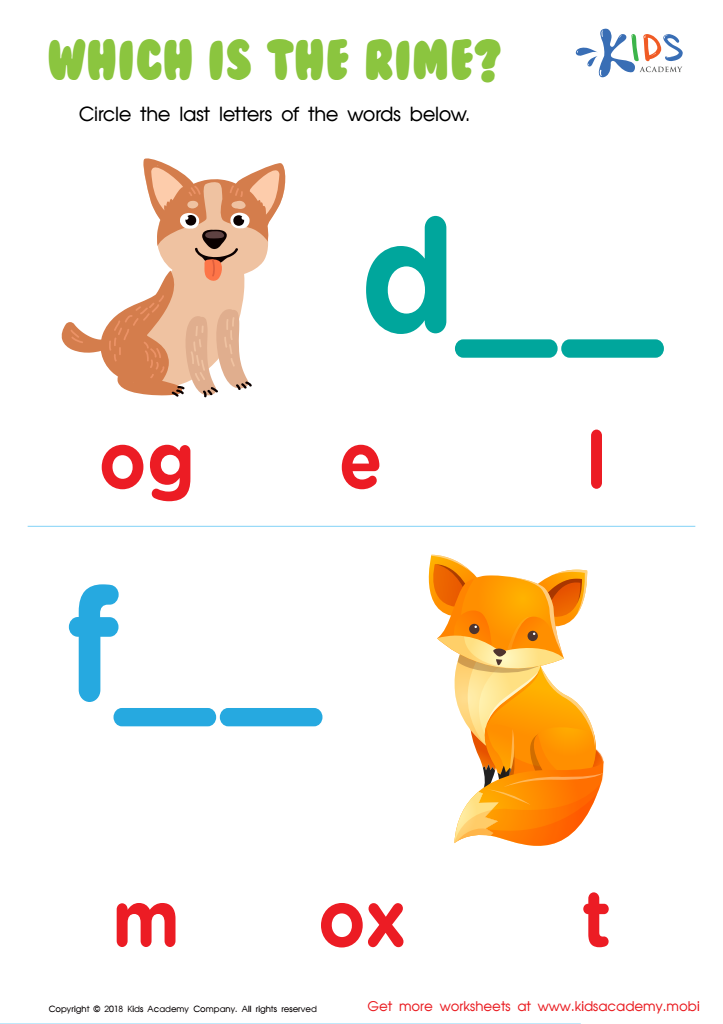

Which Is the Rime? Worksheet
Understanding ending sounds is a fundamental aspect of early literacy development for children aged 3-6. At this stage, children are beginning to recognize patterns in spoken language, and identifying ending sounds helps them grasp the concept of rhyming and word families—crucial building blocks for reading and writing.
When children can properly hear and identify the final sound in a word, they start to become more aware of phonemic structures, aiding them in decoding new words they encounter. This skill is a key component in phonics, which translates directly to improved reading fluency. For example, knowing that "cat," "bat," and "rat" all share an -at ending sound can help children predict and read unfamiliar words with the same ending.
Furthermore, cultivating an awareness of sounds enhances spelling abilities. Children with strong phonemic awareness can break words down into individual sounds, making it easier to understand spelling rules and patterns. This heightened awareness accelerates their ability to write comprehensible texts, aiding their overall educational development.
Finally, solidifying these foundational literacy skills at an early age fosters a sense of confidence and enthusiasm towards learning. As young children successfully decode words and spell them correctly, they are more likely to engage actively with reading materials, setting them on a positive academic path.
Good ending sound awareness establishes strong literacy foundations, multiplying a child's potential for future academic success.

 Assign to My Students
Assign to My Students










